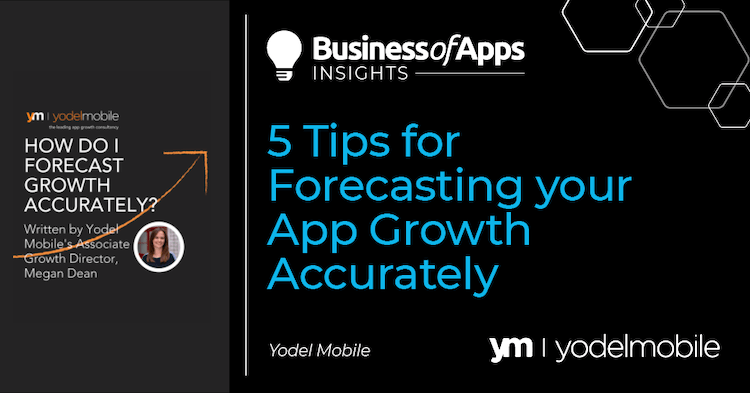Before planning to launch or scale their app, many app businesses want to gain a picture of their possible growth trajectory. This is important for a multitude of reasons; it can give you a more accurate understanding of realistic and sustainable growth for your business. Also, as you grow it can help to ensure that you are on the right track with the added benefit of satisfying investors that growth targets are on track to, or will be, met.
Growth forecasts for launching apps primarily help to ensure you are growing sustainably and at the right pace without having existing app data to rely on, whereas for apps looking to scale it can help with increasing return on investment, by preventing unnecessary losses and increasing conversion rates.
Your playbook for the new app ecosystem [webinar]
The app stores have been cracked open. Savvy teams are already capitalizing by implementing App2Web and Web2App strategies. Join Paddle’s Lucas Lovell to discover smarter billing tactics.
Register nowIn this case, it can be really difficult to forecast growth prior to launch without any historical performance to base anything on. That’s why Megan Dean, Associate Growth Director at Yodel Mobile, has whittled some advice down to a few core tips that you can use as a starting point when forecasting (or come work with Yodel Mobile and we can do it for you.)
Start with your most important metrics
If you’re monetizing, decide which metrics you’ll need to focus on to determine success. An app with in-app purchases may look at conversion to purchase, however, a subscription app should also be forecasting lifetime value. If you’re building a community, for example, think about what defines an active user. This will be crucial to whether you reach your goals set by your growth forecast.
Benchmark!
Do some research – try to find industry averages, broken down by app category and market, to give you an idea of the behavior you should expect. Consider however how diverse your app category is – for example, if you’re in Lifestyle, your averages will be taken from a wide mix of apps from dating to parcel tracking. Try to analyze how your app’s users might behave differently to adjust for your use case.
Think about your launch plan
How do you plan to launch? For example, a dating app may decide to launch in one city, to ensure a concentrated population of users – a crucial factor for dating. However, targeting smaller areas can increase costs as you reduce your overall population size. What if you’re on the other end of the spectrum, and want to launch in multiple markets? This increases cultural complexity which requires careful managing of geographies, but it might reduce your paid media costs. Build a solid launch strategy that works for your forecast.
Figure out your paid /organic ratio goals
To be profitable, most app businesses need a healthy balance between paid and organic installs. Paid growth would come from an advertising campaign, whereas organic growth might make use of content or virality engines. If your forecast indicates you need significant organic growth, your business activity will need to reflect this – invest in routes such as App Store Optimisation or product strategies encouraging virality. Be aware of how this changes the resource you need.
Know your data
At some point, you’ll want to compare your forecast to your results. The app market can be a scary place, with a lot of tracking and tech complexities. Make sure you have the setup to understand not only your core metrics but enough to understand why your core metrics are where they are. Then you can use your insights to allocate resources and expertise to get back on track, or keep that growth going!
The key to forecasting is to be prepared, know your targets and track all existing data carefully. By having an accurate picture of where you are now and a strong understanding of where you want to be, incorporating the tips above should enable you to easily and successfully forecast your app growth.
If you have any questions or need support regarding forecasting your app growth accurately, please get in touch with the Yodel Mobile growth team here. If you want to know more about which growth metrics you should be tracking in 2021 you can read our blog post here.











